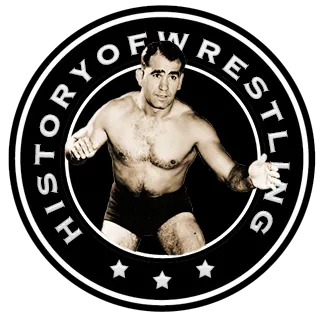by Stephen Von Slagle
Big Time Wrestling/Farhat Enterprises, Inc. (a.k.a. “Detroit”)
OWNERS/PROMOTERS:
Edward Farhat (1964-1981)
Francis Fleser (1964-1975)
STATES & PRIMARY CITIES:
Michigan (Detroit, Dearborn, Ann Arbor, Grand Rapids, Lansing, Auburn Hills, Battle Creek, Bay City)
MAJOR CHAMPIONSHIPS:
United States Heavyweight title (1964-1980)
World Tag Team title (1964-1980)
PROMOTIONAL HISTORY:
The city of Detroit has long been a hotbed for professional wrestling, dating back to the 1920s when promoter Nick Londos first began holding cards at the Olympia Stadium. During the subsequent decades, a succession of capable matchmakers followed Londos into the lucrative Detroit marketplace, the most notable being Harry Light, who successfully operated the territory from 1945 through 1959 before selling his promotional rights to Jim Barnett and Johnny Doyle following a brief promotional war. Over the course of the next five years, the Barnett-Doyle Corporation built on the foundation laid by Detroit’s previous promoters and the territory prospered under their watch. Then in 1964, they in turn sold the Detroit promotion to Ed “The Sheik” Farhat and his father-in-law Francis Fleser when Barnett and Doyle left the region to start their World Championship Wrestling promotion in Australia.
Nearly immediately upon purchasing the territory, Farhat’s investment began to pay off as Detroit soon became one of the NWA’s most successful promotions. With the infamous Sheik serving as the perennial United States champion and a rotating roster of top-level wrestlers filling out Big Time Wrestling’s cards, the promotion regularly sold out the 12,000 seats at Cobo Arena, the group’s primary venue, as well as the numerous facilities throughout the cities that comprised the Detroit territory. In addition to promoting Michigan, the Sheik (and many of his Big Time Wrestling stars) also appeared frequently in Frank Tunney’s Toronto promotion from 1969 through 1977. While The Sheik clearly dominated the Detroit territory and was its main attraction for the entirety of its existence, the promotion also featured an impressive lineup of legendary performers such as Bobo Brazil, Andre the Giant, Fritz Von Erich, Harley Race, Johnny Valentine, Dusty Rhodes, Abdullah the Butcher, Pampero Firpo, The Fabulous Kangaroos, Dick Murdoch, Mark Lewin, the Samoans, and Gino Hernandez among many others. Beginning in 1971, the Detroit territory was invaded by William “Dick the Bruiser” Afflis and Wilber Snyder’s Indianapolis-based World Wrestling Association and the two companies engaged in an intense, heated promotional war for the following three years. Although The Bruiser’s group posed a serious threat and his WWA enjoyed a good deal of success in the Detroit market, in the end, it was Ed Farhat’s promotion that emerged victorious. Once the war had ended, both sides were savvy enough to see the financial benefits of working together and the subsequent Bruiser vs. Sheik battles drew numerous sold-out crowds in the arenas of both promotions for the next two years.
Beginning in the late 1970s, Ed Farhat, despite his worldwide fame, many contacts within the business, and longtime membership in the NWA, began running afoul of the National Wrestling Alliance and, in particular, NWA Treasurer Jim Barnett. Farhat felt that Barnett was trying to regain the Detroit office he’d sold years earlier by intentionally harming the territory, agreeing to loan certain wrestlers to the Detroit promotion only to have them no-show Farhat’s cards, which, of course, is a surefire way to kill a promoter’s fanbase. After repeated (and costly) instances of Barnett seemingly not being true to his word, Farhat began ignoring the NWA bylaws, working for “outlaw” promotions that recognized champions other than those of the NWA and generally disregarding any complaints and/or ultimatums made to him by the Alliance. The end result of the conflict between the two sides wasn’t difficult to predict; Farhat’s standing as a member of the NWA was eventually suspended for one year. During this same time period, the U.S., and particularly the city of Detroit, was experiencing a severe economic recession. The poor economy, combined with Farhat having been essentially blackballed by the NWA, not to mention the loss of his Detroit television carrier, resulted in a stagnant talent roster (including The Sheik himself, who had been over-exposed following decades of being the promotion’s top star) that lead to an onerous decline in attendance and, ultimately, the closure of the Detroit territory and Farhat’s Big Time Wrestling promotion in 1981.



